Story – Christopher Hector Photos – Roslyn Neave
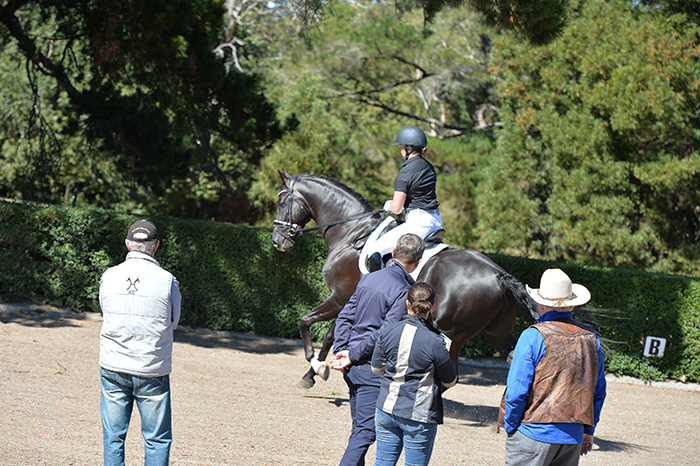
Usually my interviews with Hanoverian boss, Werner Schade are conducted on his turf, Germany, this time, there’s the noisy cackle of white cockatoos and the smell of eucalyptus in the air.
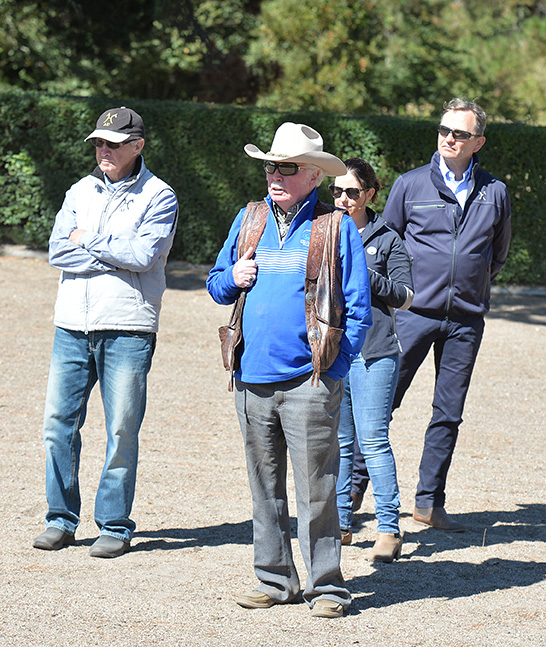
Kevin Lewis, Volker Ehlers, HHSA president, Clare Mueller, and Werner Schade
It is an historic moment, and a triumph for former Australian Hanoverian’s president, now registrar, Janette Lewis. Werner, along with American Hanoverian assessor, German born but now US based, Volker Ehlers, and Australian assessor, Kevin Lewis, are conducting our first licensing, long Janette’s dream.
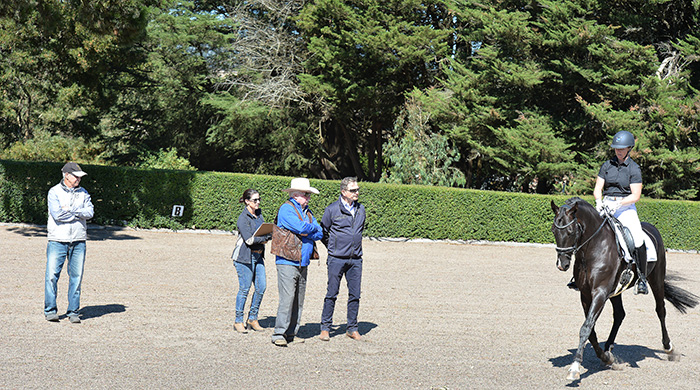
There is only one candidate here at Rochdale Stables, Revelwood Stedfast, the handsome son of Stedinger, out of a Depardieu mare, beautifully presented by Justine Greer. The stallion passes and a new era in Hanoverian breeding in Australia has begun!
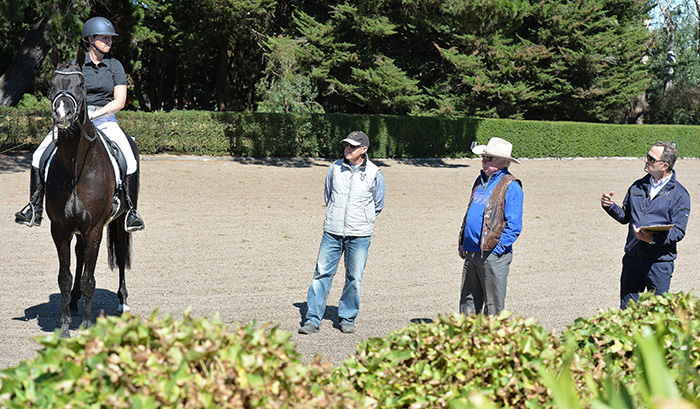
Time to discuss it with Werner…
You were pleasantly surprised by the quality of the horses you saw in New Zealand and Australia…
“Yes, I am very impressed. Three things I like very much. First, many breeders used a Thoroughbred mare as a foundation mare for their breeding, and it is good to see that the horses are athletic, they have good frames, are very clean in the legs, all the positive influence of the Thoroughbred. The second thing is I have the impression that the breeders here use the right bloodlines from the German horses. They looked very carefully for type, for correctness, but very much for good temperament, good rideability and behaviour. The third thing is that everywhere we went, the horses looked good. I saw many good hooves, big hooves, better than in Germany, maybe the reason is that the horses are more outside here than in Germany, and have more opportunity to move. I saw interesting genetic combinations. I saw foals and mares and also stallions that I wished we had in Germany.”
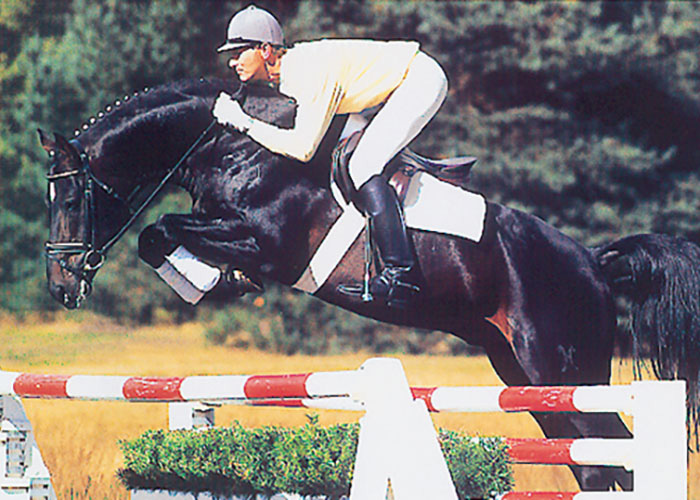
Fabriano – shaping the Australian Hanoverian…
“There are some different lines here in Australia like Fabriano, and that is interesting, I think Fisherman’s Friend did a great job here. There is a good foundation here, you can work with that.”
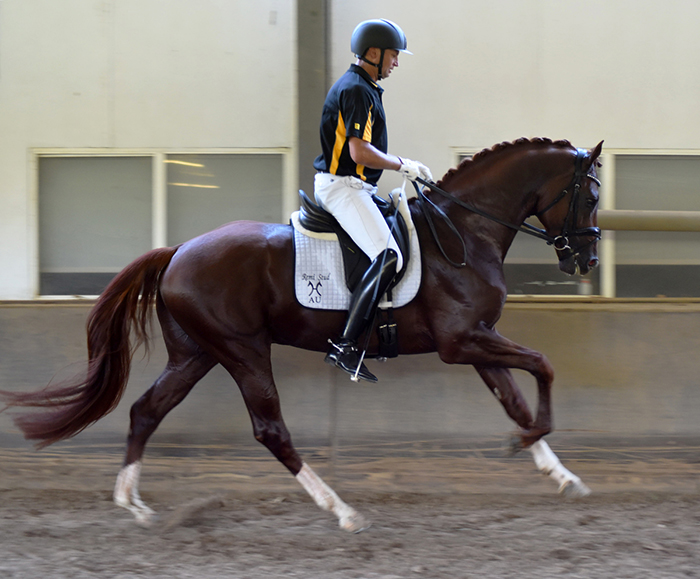
First stallion to be licensed in Australia, Remi Vigneron
The first stallion to be licensed in Australia was the four year old Remi Vigneron by Viscount (who is a son of the German based, Dutch stallion, Valentino) and out of Remi Love Story by Lanthan.
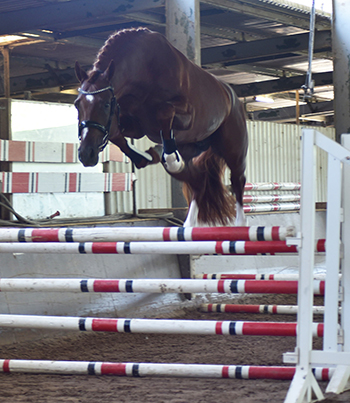
Remi Love Story is a full sister to Underdiscussion, who, with Christopher Burton, has his name on the winner’s scoreboard at CHIO Aachen for an eventing win in 2012.
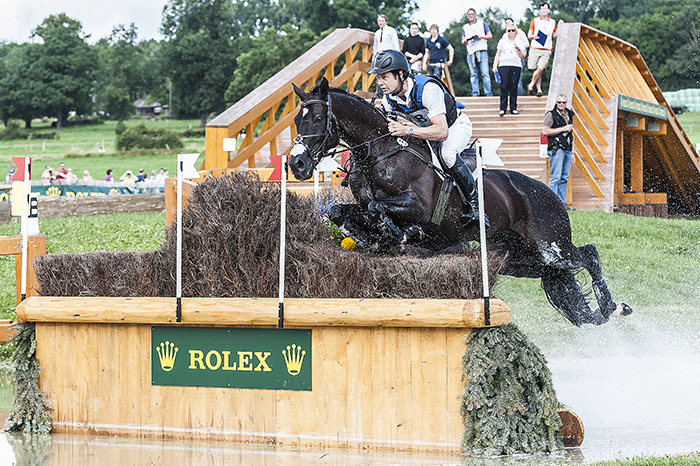
Underdiscussion and Christopher Burton winning at CHIO Aachen in 2012.
Photo: Richard Dunwoody
Remi Vigneron scored well, with all 8s for paces and a 9 for freejumping. He was one of the horses Werner thought they could use in Germany…
“This is exactly what I expect for the future. I think we have a good international situation in the Hanoverian breed and that’s why I am very glad to be here in Australia, to see what is going on because I think in the future we will look world-wide for good horses and special bloodlines. I am very happy that the Australian breeders take care of some of these bloodlines. Some work really well here – for example I saw some fine Don Index offspring. For the future of the Hanoverian breed we must have more international thinking and we will look everywhere.”
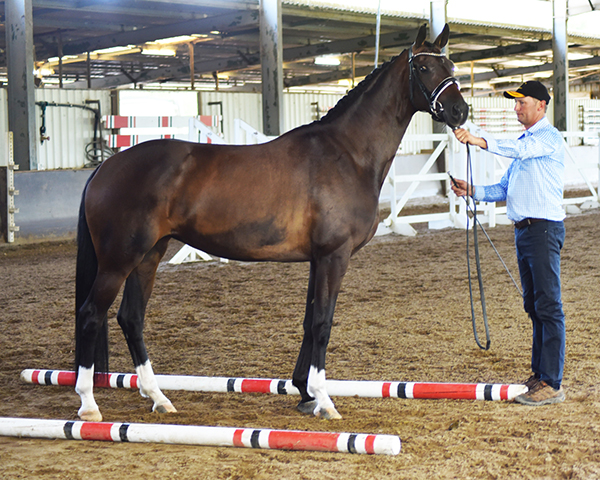
The Don Index four year old filly, PrMC Remi Donna Karran,
out of a Sir Donnerhall mare
That’s really been the hallmark of your time at the head of the Hanoverian Verband – an international vision…
“That is true, but we still have to work at it. In the past few years there has been a concentration on the big changes in Germany. In Germany we have radically changed our structure, and I was a little sad, that I didn’t have the time at the beginning of this year to make this tour, but I am very happy that I did come and talk with the board in New Zealand, Volker Ehlers who is also on the tour, represents the United States, and now I have had very good talks with the Australian commission, and the Australian breeders. Aside from the work of judging, we have had very good talks about international improvement. In summer, in August, we will have an international meeting in Verden and we will come up with new ideas for more communication, more exchange and I will also discuss with the Board in Germany as to how we can find new ways to support our world-wide structure, because I am convinced that with the top class horses, it doesn’t matter where they were bred, it depends only on the quality, and the top horses will be shipped everywhere.”
It is interesting, you seem to be genuinely succeeding on the two fronts – dressage and jumping, once upon a time, Hanover would win the WBFSH dressage award, but half the time it was with horses like Satchmo or Salinero, that were jumping bred – now the dressage representatives are obviously bred for dressage, although the modern dressage horse seems to need some good jumping blood on the bottom line. At the same time, your jumping horses have come out of the trough they were in…
“In the last ten years we have tried to change the breed to more sport pedigrees, in both disciplines. In dressage we now have a generational change in the horses and we have high expectations of some of the young horses. Maybe you saw the mare, Freestyle at the Tryon WEG. We are very happy that she was sold at our foal auction – this is a perfect horse, and Charlotte is a great rider.
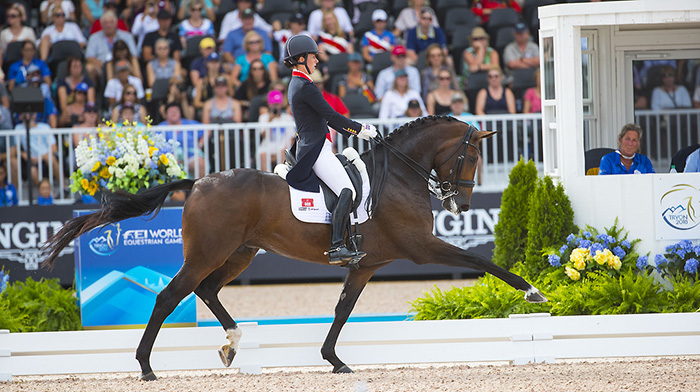
Charlotte Dujardin and Freestyle (Fidermark/Donnerhall) at the WEG in Tryon
This is one example of the next generation we look for, complete horses, very impressive with three good gaits. We expect to see more like this in the next few years, because if you look at the World Championships for Young Dressage Horses, there have been some very good horses in the last few years, and I think we have to wait, two, three years when I am convinced some of them will come up in the international sport. So we are strong in dressage.”
“I am also very happy with the jumpers, because we opened the breeding policy in the last years. About five, six years ago, we took some big steps – French stallions, Belgian stallions, good bloodlines. It’s not a new idea, it has always happened in the history of the Hanoverian breed but now, it is in a new way, so that the breeders have more access to the international sport stallions, and they use them.”
“Again we look to the young horse classes, at the Bundeschampionate, there were very good young horses with our brand. It takes time, but we will work hard to come to a better place on the world jumping rankings.”
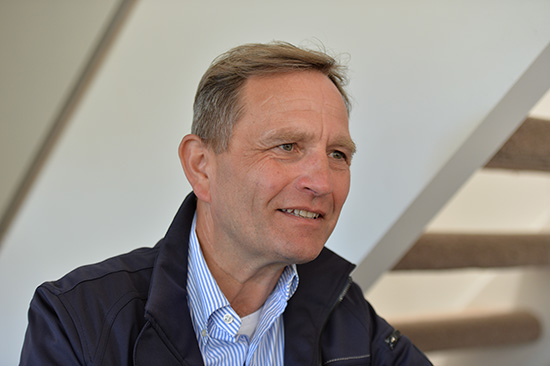
“The third discipline I am very happy with is eventing. We have good horses out competing and winning.”
I can remember a few years ago, you personally were struggling to promote eventing breeding, you were trying to keep alive the legacy of Fredrich Butt and his line of eventers, now everything has changed, Australian event riders are coming to Hanover to buy their next stars…
“We are very happy about that! Australia, New Zealand, the UK, the great eventing countries, they buy our Hanoverian horses.”
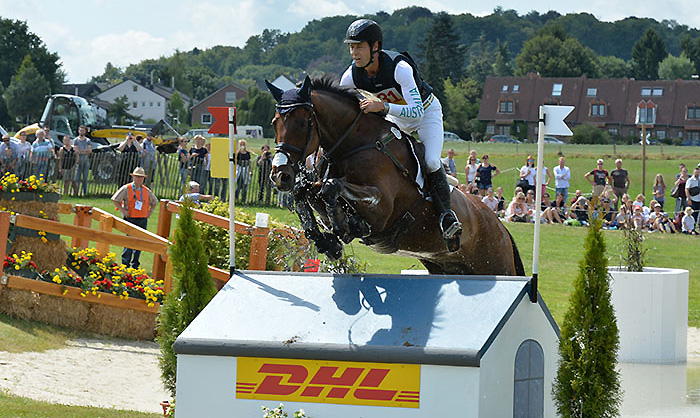
Aussie rider, Hanoverian horse – Christopher Burton and his Burghley winner, Nobilis, by the Thoroughbred, Nobre, out of a mare by another Thoroughbred, Lemon, but the bottom line is thoroughly Hanoverian: Trapper, Duellant, Dwinger…
Twenty years ago, there was a thinking that to breed dressage horses we have to breed dressage to dressage, now it does seem a bit of jump on the mare side is an advantage…
“We like good jumping bloodlines with good gaits for dressage, because of the construction of the back. We have some very specialised jumping bloodlines that are not usable for dressage but there are other jumping horses with very good movement.”
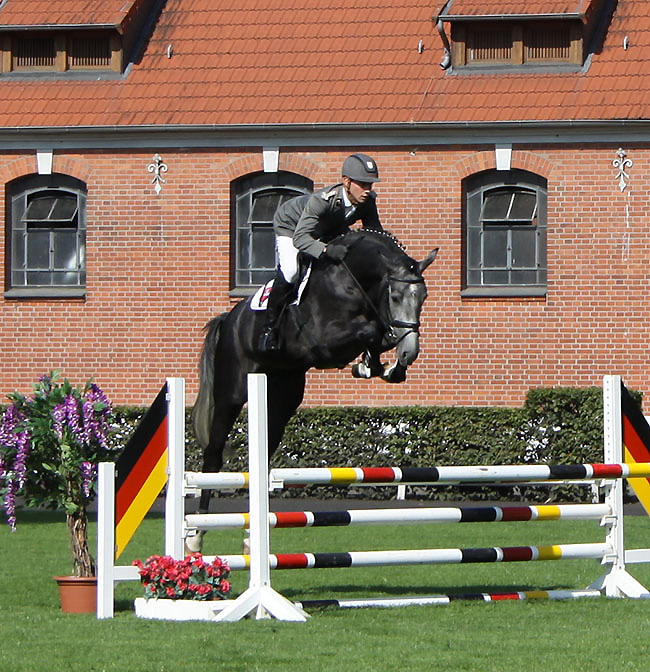
Diacontinus, producing good moving jumpers for Hanover
Stallions like Escudo…
“Yes, Escudo, and now Diacontinus is interesting, nearly every Diacontinus offspring has good movement.
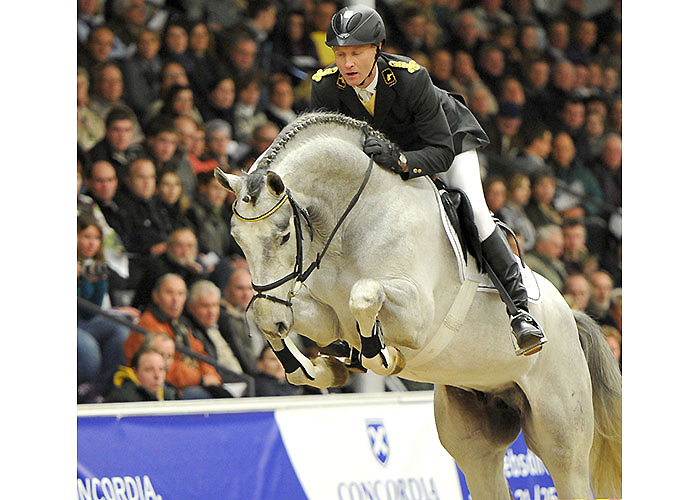
Grey Top, crossing well with Thoroughbred mares. Pic Kiki Beelitz
Or Grey Top is another jumper who produces good movement. I saw that here in Australia, it was the best colt at Cheryl O’Brien’s place, a Grey Top out of a Thoroughbred mother – wow, I was so impressed.
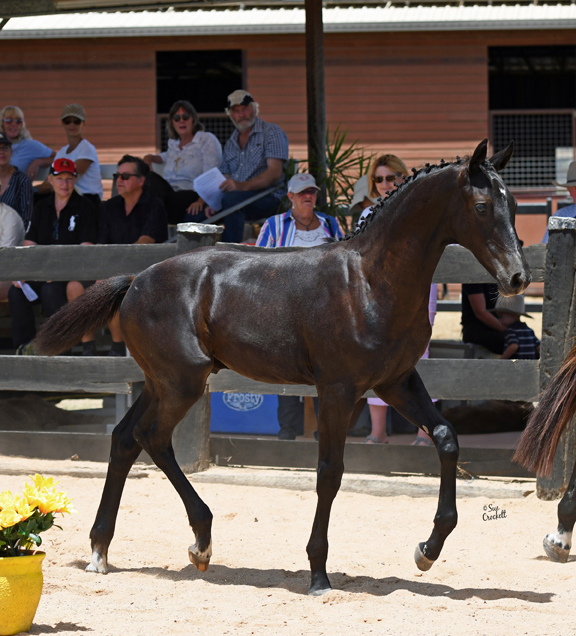
Hillco Grafitti – by Grey Top out of a Thoroughbred mare by Kodak
(Photo – Sue Crocket)
“This is a match we should have in Germany, a very high quality colt.”
more follows below
Grey Top is available in Australia from International Horse Breeders – plus many more star stallions – go to www.ihb.com.au
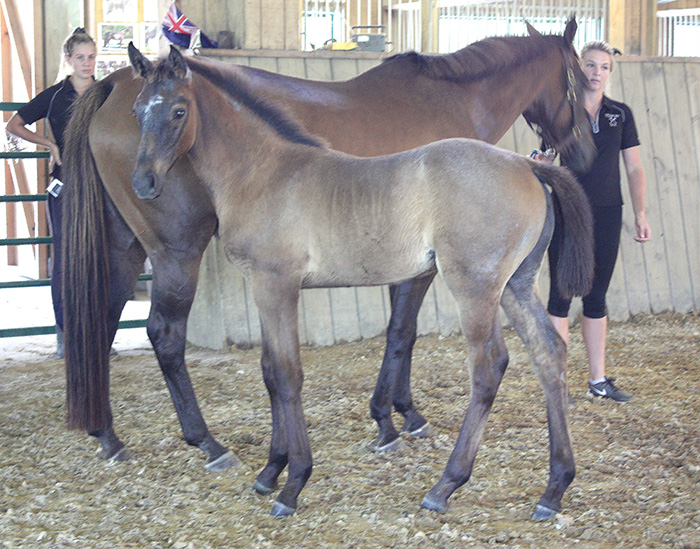
Copyright MH (Cornet Obolensky/Grosvenor xx) Bred by Matthews Hanoverians, Awanui, Northland, New Zealand
“In New Zealand we saw a Cornet Obolensky out of a Thoroughbred mare, the type and the movement, unbelievable! Unbelievable!! I said, ‘please keep this colt as a stallion’. This is a horse we should keep an eye on.”
Times change! We have a colt by a Belgian stallion, out of a Thoroughbred mare, and there he is with the Hanoverian brand on his rump!
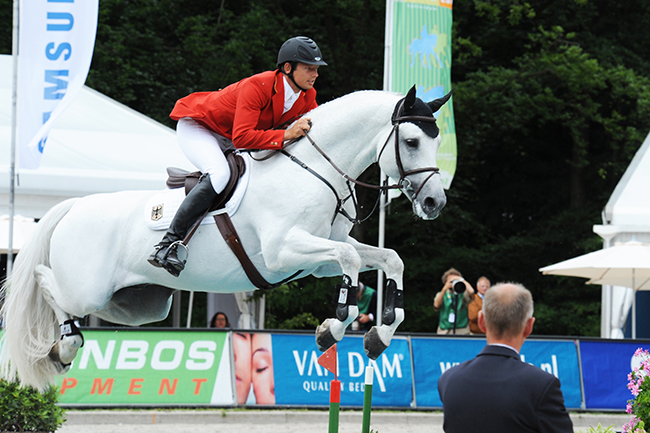
Cornet Obolensky competing with Marco Kutscher
“Yes! This is possible today, he is a Hanoverian. And I am convinced this is the right way. Maybe this horse could be a stallion, very high quality, very good type, everything correct. For me it is good to see this development but we should take care of the old bloodlines too. We can do both, we can take care of the old Hanoverian mare families, to develop them, and on the other side, I like to have an open breed. For me, this is the way forward.”
Hanover took a real blow when two of their top Celle based stallions, Don Frederico and Londonderry, along with lesser lights, Don Index, Londontime and Quaterhall, tested positiver. Werner conceded that it was a loss for them…
“That hurts, all the big boys, but for me, how this problem was dealt with was a little bit hysterical, because we don’t have so many verified cases of this disease and we don’t have data on possible abortions. But with Londonderry and Don Frederico, there is no history of a higher rate of abortions and missed pregnancies. They had a lot of mares, and if there had been a high rate of abortions then we would know that, the breeders would tell us.”
“We think we have to be careful. So far we will not exclude carriers from the breed, we will license them – we have to inform the breeders, this is a carrier and if you have a mare that is not a carrier, then it is no risk to use a carrier stallion, there is a risk of 25% that the foal might be a new carrier, but still healthy.”
Aren’t we running the risk of adding more and more carriers to the gene pool, they might not themselves be unhealthy, but you are perpetuating the gene within your population, and there is some argument that the alternative is just to breed it right out of the population…
“We don’t think that we have the knowledge, the situation has not developed enough to make this sort of decision. While I was here in Australia for the first ever licensing, I had a good discussion with some of the breeders, and the first thing for them is transparency and information, so the breeders can make a decision. Many breeders were successful with using Londonderry or Don Frederico, and we are not breeding to breed breeding horses, we are breeding to breed riding horses. Maybe our strategy will change in the future, but we can only make decisions based on facts.”
Do you think the breeders will continue to use Don Frederico? I was talking to a Dutch equestrian journalist, and he said he thought the carrier stallions in his country would get no mares… Is it the same in Hanover?
“I think in the short time, the positive stallions will have a problem. In Germany over the past year the thinking has changed. It was a big topic in the beginning of the year, then in the second half of the year, it was the first time at our licensing that we tested all the accepted stallions and we had five stallions that tested positive. We didn’t take them out of the licensing because we licensed only on quality and one of the five was a premium stallion, and sold for a good price. During the licensing, there was not a big discussion about this topic, I think people have learned to deal with the situation – they have checked their mares now – and they are not so concerned about it. But in the short term, I think it will be hard for positive stallions to attract mares, this is what the stallion owners tell us.”
Do you have a nice non-carrier son of Don Frederico?
“We do have one, and I hope he will come back into breeding. He was a premium stallion three years ago, he is not breeding, he is in a training stable, and so far as I know, he is not a carrier. He is six years old and he will be tested this year, but I called the owner and said, you have an interesting Don Frederico and we would like to keep the line going because Don Frederico was very valuable for the Hanoverian breed and we would like to find a way to keep this line. The same with Londonderry.”
But with Londonderry when we first saw him we thought, this is the most wonderful stallion, but to be ruthlessly honest, as a sire he has not been a huge success…
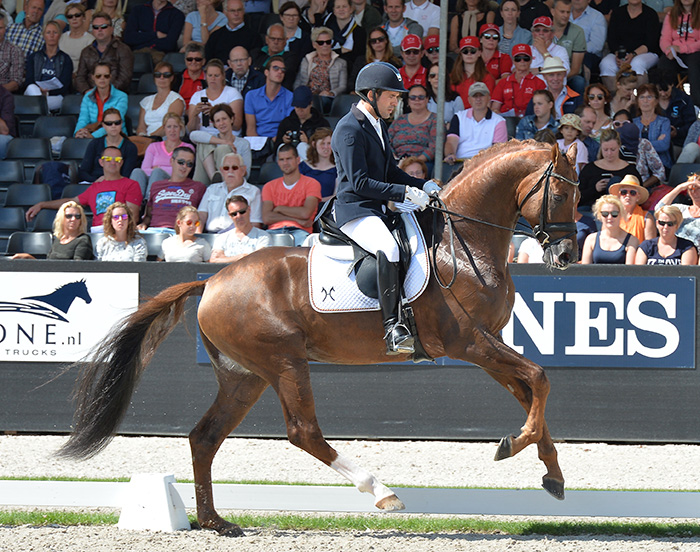
World Champion d’Avie, carrying on the important Lauries Crusader bloodline
though his dam sire, Londonderry
“Yes, with direct offspring in sport you are right, but his value for the breeders is on the mother’s side. One example is the World Champion stallion, d’Avie, if you look at him, he is very close to Londonderry, and we have many good horses with Londonderry mothers, they give type – I think the whole Lauries Crusader bloodline will have its high value on the mother’s side in the future.”
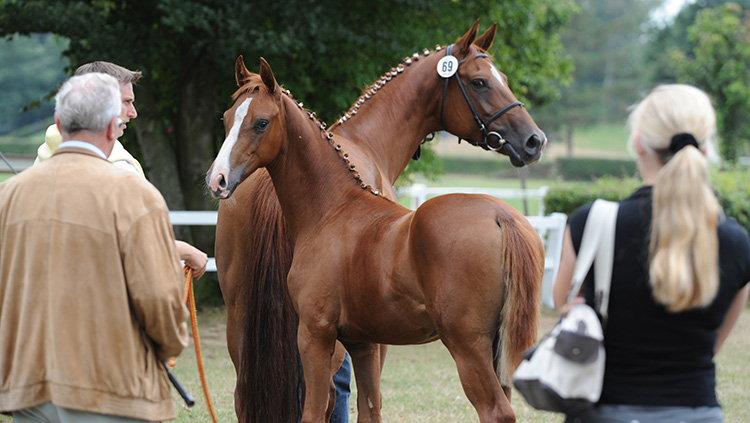
Is the breeding scene recovering in Germany now? There was about a 50% decline all over Europe, has the situation corrected itself now?
“We lost around 40% in the number of registered mares in our breed that were covered and we don’t expect that we will come back to the old numbers but the good news is that over the last three years, the numbers have stabilized. Last year was the first year we have seen an increase, it was only a small increase but there was an increase in the number of coverings. And this is a good message.”
The last time there was a huge reduction in the number of broodmares, just after the Second World War, there was a feeling that this in fact improved the quality of the horses in Hanover – has it happened again…
“Yes, but at first we were not sure, we thought a loss of numbers would lead to a loss of quality because you reduce your base for selection, but you are right, the quality mares, they stayed, so we didn’t see a loss of quality. For example, the last three stallion licensings were all very good. We selected in the pre-selection, a little bit more than 400 stallions, and the former base was over 700, so this is a big difference, but the stallions we could select for the licensing, were good, the quality went up. We were very happy because we had very good dressage in the selection, and also in the selling of the stallions the prices were very good and the interest was high – there was a consolidation in a positive way.”
Once again, thank you Werner Schade for your time and your openess…



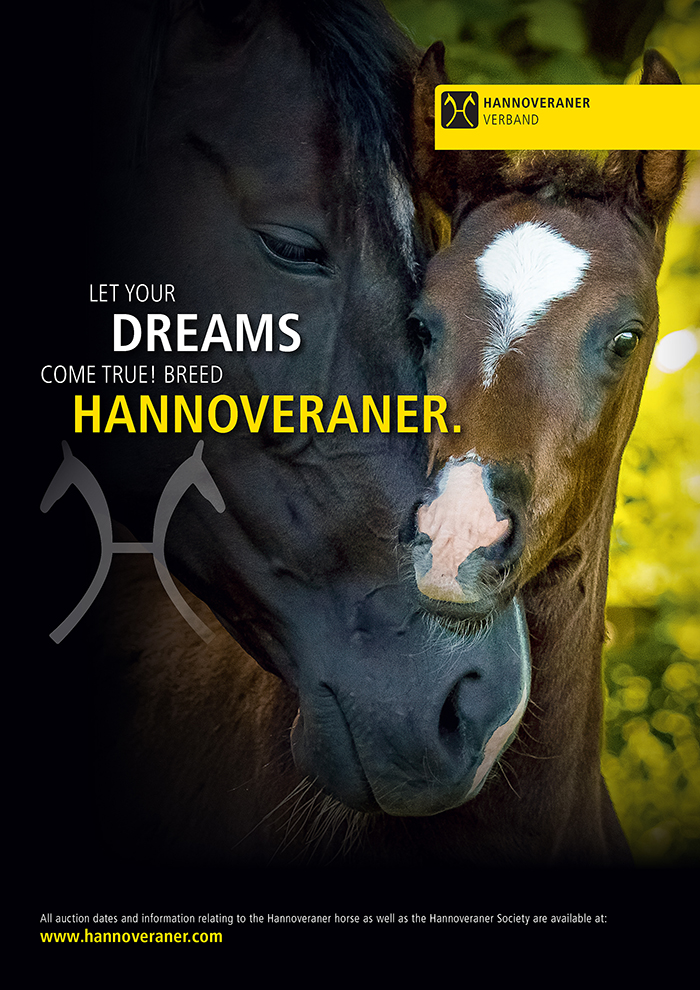
I thought your readers might be interested, since Warmblood Fragile Foal Syndrome was discussed in this article, in some reference material.
Here is a page of FAQs about WFFS: http://breeding-news.warmbloodstallionsna.com/2018/06/wffs-faqs.html.
I also wanted to mention that the reason it’s not “best practice” to simply eliminate WFFS by never breeding a carrier is because the warmblood gene pool is already small – constricting it further would only ensure more genetic defects down the road. If you never breed carrier to carrier you will never have an affected foal, so that is what most breeders are aiming for.
Another excellent resource is the WBG – WFFS Awareness Group on FB: https://www.facebook.com/groups/WBG.WFFS/. These folks have been advocating for facts, knowledge and sensible decisions about WFFS for a year now.
Finally, I published an editorial partly in response to this article, discussing in detail the description of American breeders as “hysterical” and whether it’s justified. Read the editorial here: http://breeding-news.warmbloodstallionsna.com/2019/03/are-american-breeders-hysterical.html
Reading over Werner’s response three times, I fail to find the word ‘American’ anywhere in his comments. One of the most hysterical commentators at the time on Facebook was in fact Dutch (this is my comment not Werner’s) I feel readers should read Werner’s full response to my question, not edited highlights which give a somewhat distorted picture. Here is it:
“That hurts, all the big boys, but for me, how this problem was dealt with was a little bit hysterical, because we don’t have so many verified cases of this disease and we don’t have data on possible abortions. But with Londonderry and Don Frederico, there is no history of a higher rate of abortions and missed pregnancies. They had a lot of mares, and if there had been a high rate of abortions then we would know that, the breeders would tell us.”
“We think we have to be careful. So far we will not exclude carriers from the breed, we will license them – we have to inform the breeders, this is a carrier and if you have a mare that is not a carrier, then it is no risk to use a carrier stallion, there is a risk of 25% that the foal might be a new carrier, but still healthy.”
Aren’t we running the risk of adding more and more carriers to the gene pool, they might not themselves be unhealthy, but you are perpetuating the gene within your population, and there is some argument that the alternative is just to breed it right out of the population…
“We don’t think that we have the knowledge, the situation has not developed enough to make this sort of decision. While I was here in Australia for the first ever licensing, I had a good discussion with some of the breeders, and the first thing for them is transparency and information, so the breeders can make a decision. Many breeders were successful with using Londonderry or Don Frederico, and we are not breeding to breed breeding horses, we are breeding to breed riding horses. Maybe our strategy will change in the future, but we can only make decisions based on facts.”